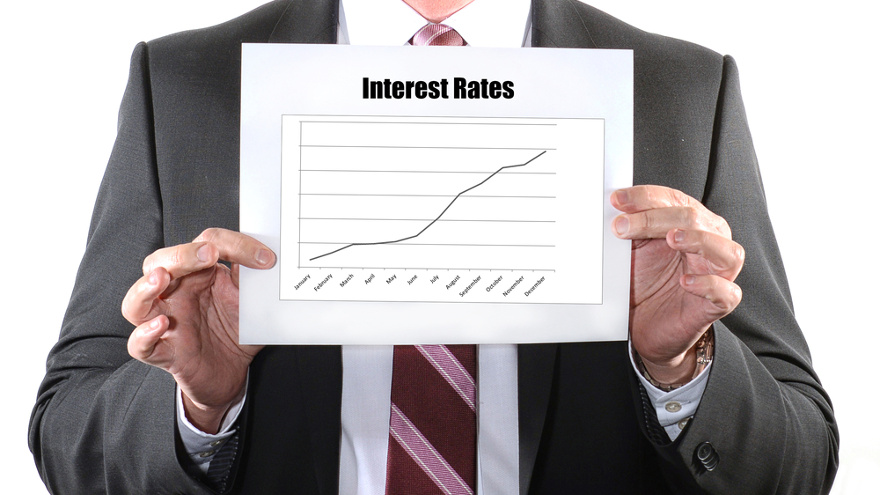Examining how Fed’s rate move might impact auto

By subscribing, you agree to receive communications from Auto Remarketing and our partners in accordance with our Privacy Policy. We may share your information with select partners and sponsors who may contact you about their products and services. You may unsubscribe at any time.
CARY, N.C. –
This year began with expectations the Federal Reserve would push interest rates higher multiple times. Then this week, not only did policymakers maintain the rate at its current level, experts are seeing the possibility of a rate cut before 2019 closes — perhaps because a recession might be approaching.
While not a unanimous move, members of the Federal Open Market Committee (FOMC) voted to maintain the target range for the federal funds rate at 2.25% to 2.50%. James Bullard went counter to the other nine policymakers as he looked to drop the rate by 25 basis points during the FOMC’s regularly scheduled meeting this week.
KAR Auction Services chief economist Tom Kontos agreed with the FOMC majority.
“I feel the Fed’s action, or in this case, inaction, in not raising or lowering rates is absolutely appropriate,” Kontos said in a message to SubPrime Auto Finance News. “Inflation is muted, and GDP growth rates are modest.
“This also gives the Fed additional ‘wiggle room’ if the economy was to turn South,” Kontos added.
Turning South and into a recession certainly is not what the FOMC wants, the committee explained in its rate statement. However, the Fed acknowledged that uncertainties about the current path of sustained expansion of economic activity, strong labor market conditions and inflation staying near the committee’s symmetric 2 percent objective are growing.
Subscribe to Auto Remarketing to stay informed and stay ahead.
By subscribing, you agree to receive communications from Auto Remarketing and our partners in accordance with our Privacy Policy. We may share your information with select partners and sponsors who may contact you about their products and services. You may unsubscribe at any time.
Chairman Jerome Powell began a press conference on Wednesday by stating, “At the Federal Open Market Committee (FOMC) meeting that concluded today, we maintained our policy interest rate, but made some significant changes to our statement. Since the beginning of the year, we have judged that our current policy stance was broadly appropriate, and that we should be patient in assessing the need for any changes. In light of increased uncertainties and muted inflation pressures, we now emphasize that the committee will closely monitor the implications of incoming information for the economic outlook and will act as appropriate to sustain the expansion, with a strong labor market and inflation near its 2 percent objective.
“While the baseline outlook remains favorable, the question is whether these uncertainties will continue to weigh on the outlook and thus call for additional monetary policy accommodation. Many FOMC participants now see that the case for somewhat more accommodative policy has strengthened,” Powell continued.
Powell also offered a glimpse of the mood inside of the FOMC’s fourth of eight regularly scheduled gatherings. The committee will assemble again at the end of July.
“Overall, our policy discussions focused on the appropriate response to the uncertain environment,” Powell said in his opening remarks on Wednesday. “The projections of appropriate policy show that many participants believe that some cut in the federal funds rate will be appropriate in the scenario that they see as most likely.
“Though some participants wrote down policy cuts and others did not, our deliberations made clear that a number of those who wrote down a flat rate path agree that the case for additional accommodation has strengthened since our May meeting. This added accommodation would support economic activity and inflation’s return to our objective,” he went on to say.
What might the Fed do during the heat of summer? Perhaps Powell shared what could be in store.
“Uncertainties surrounding the baseline outlook have clearly risen since our last meeting. It is important, however, that monetary policy not overreact to any individual data point or short-term swing in sentiment. Doing so would risk adding even more uncertainty to the outlook,” he said.
“Thus, my colleagues and I will be looking to see whether these uncertainties will continue to weigh on the outlook. And, we will use our tools as appropriate to sustain the expansion,” Powell went on to say.
It might behoove dealerships and auto finance companies to watch the Fed’s future actions as consumers are seeing higher costs to purchase a vehicle when financing is needed to complete delivery.
According to a blog post from Cox Automotive chief economist Jonathan Smoke, financing data from Dealertrack through the first portion of June showed the average rate on new-vehicle financing rose to 6.54%, up 23 basis points over May. The average used-vehicle rate moved 12 basis points higher from May to 9.96%.
“Credit is tightening for auto loans as lenders demand a higher risk spread,” Smoke wrote. “That tightening is offsetting the downward movement in market rates, so the consumer is not seeing better rates.
“Combine higher rates with higher sticker prices, less discounting and lower incentives and it is easy to understand why retail new-vehicle sales are down 4% so far this year,” he continued.
“It is even worse for subprime borrowers,” Smoke went on to say. “So far in June, the average rate on a subprime new vehicle loan is 17.93%, up more than a full point from May and more than 130 basis points from a year ago. This is why the action we are seeing in subprime year to date is in used financing and in leasing.
“The Fed often cuts rates before a recession begins, but by the time they do, it is too late to have a stimulating effect. We may be at that point in this cycle,” Smoke concluded.


